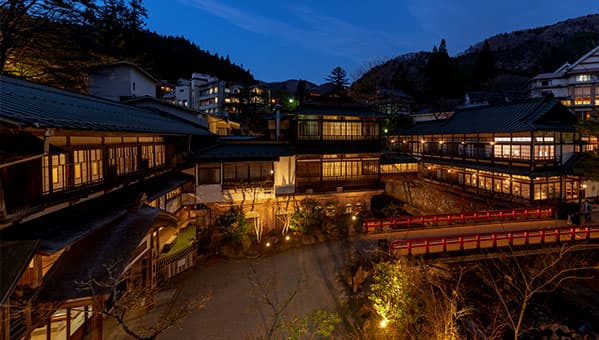
- TOP
- About
About
Sekizenkan, an inn with a history of opening
in the 7th year of the Genroku era
It spreads when you cross the red bridge
special space
The sun shines on the river bed that is transparent in the shallows,
The depths are dyed a jade color by the best light.
``Sekizenkan'' is located on the other side of the red bridge that spans the hot spring town along the beautiful Shima River.
Three hundred years ago,
Since its establishment in the Genroku era,
Our hotel has continued to soothe the many people who visit with the Shima no Yu hot springs.
While surrounded by trees growing on the mountain slope,
Even today, the beautiful old appearance and the care for the guests have been passed down.
Soak in the hot water and relax your mind and body.
There's nothing here,
I have the luxury of doing nothing.

Origin of Sekizenkan -Sekizen's house has a yokei-
Sekizenkan has been passed down from generation to generation by the head of the family who uses the family name of "Seki". However, it is said that his ancestor was a samurai with the surname "Sato" who served Genji. In 1182, some of his descendants (Sato Higonokami Kiyotada) were given the surname 'Seki' along with their territory in Shimonoseki (now Yamaguchi Prefecture) by Minamoto no Yoritomo. was named.
After that, the Sekike moved to the Kanto region, and after several generations, settled in Oaza Oiwa, Nakanojo-machi, Agatsuma-gun, Gunma Prefecture. The first Seki Zenbei, who died in 1613 (Keicho 18), branched out from the Seki family to Shiman.
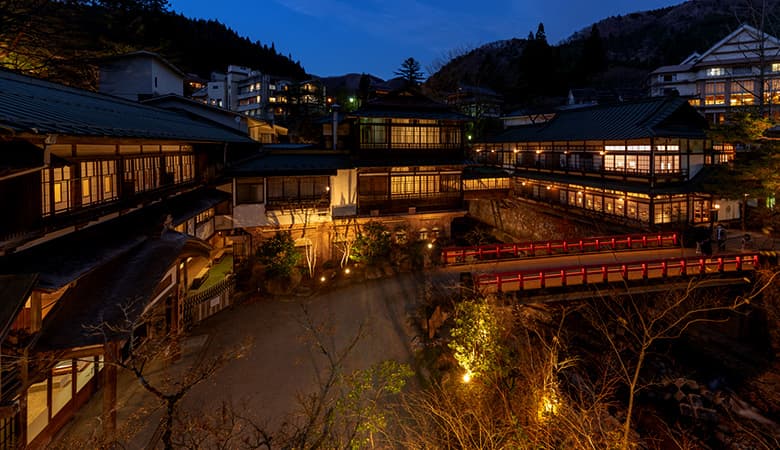
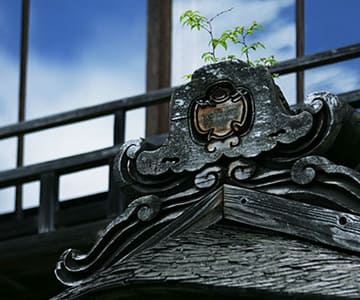
After that, in 1691 (Genroku 4), the 4th or 5th generation Seki Zenbei built a bathhouse and an inn at the current location (the current Sekizenkan Honkan building was originally a two-story building). Three years later, in 1694 (7th year of the Genroku era), it opened as a Hatago inn. Local people affectionately called Seki Zenbei "Sekizen".
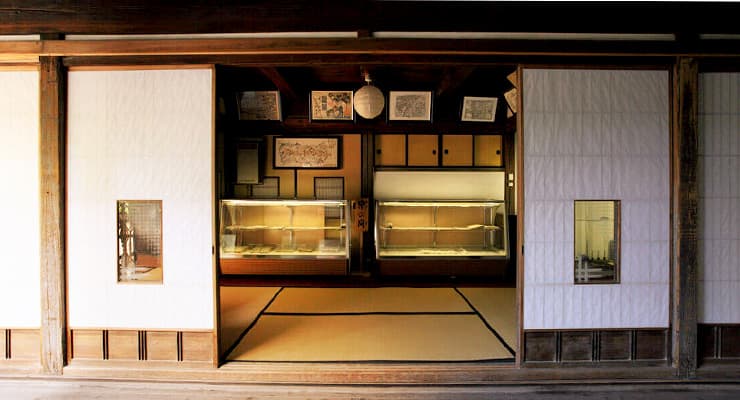
Entering the Meiji period, the 15th Seki Zenbei wrote in the old Chinese Confucian scripture I Ching, Good things will always happen to you.) In connection with the phrase, "Sekizen" is replaced with "Sekizen," and "kan," which means ryokan, is added below it, resulting in the name "Sekizenkan." I made it
The letters “Sekizenkan” on the large wooden sign that hangs at the entrance of the current Sekizenkan Honkan Building were written by the 15th Seki Zenbei.
*The signboard has deteriorated and needs to be repaired, so we are currently displaying a new one. In addition, the signboard of "Sekizenkan" drawn by the 15th Seki Zenbei is displayed in the reference room.
Until the 18th generation, the name was "Seki Zenpei", but from the 19th generation onwards, someone with a connection to the Seki family has inherited the thoughts and history of the Seki family to this day.
About Shima Onsen
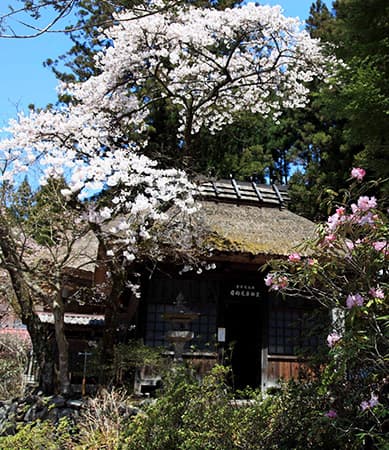
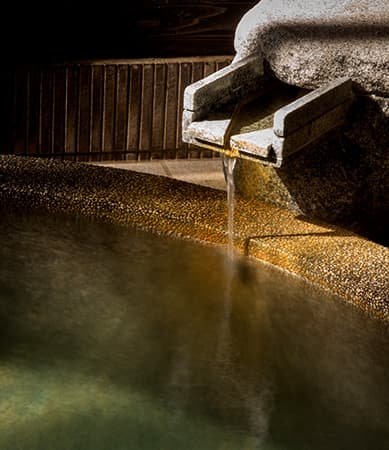
Two legends about the origin of Shima Onsen
There are two theories about the origin of Shima Onsen.
One theory is that Sakanoue no Tamuramaro, who came to conquer Ezo as the Seii Taishogun during the reign of Emperor Kanmu (737-806), bathed here.
The second is that during the Enryaku era (782-806), when Minamoto no Yorimitsu's vassal, Hyuga no Kami Usui Sadamitsu, visited the land of 40,000 and was reading sutras at night, a child appeared and said, ``I feel your sincerity in reading the sutras. I am the divine spirit of this mountain.” In gratitude for this revelation and the hot springs, a temple was built to enshrine the statue of Yakushi Nyorai.
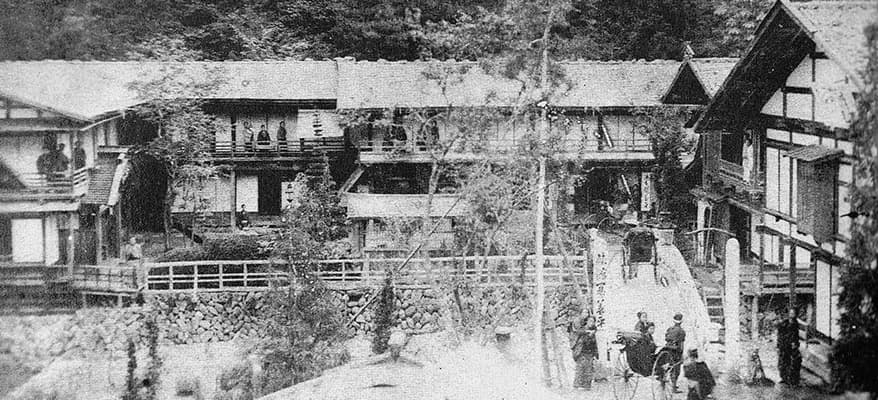
Hot spring cure and Shima Onsen
Since ancient times in Japan, it has been customary to stay in hot springs for two weeks or more to recover from illness or to rest during the agricultural off-season.
According to ancient documents that mention Shima Onsen, there was a hot spring inn at Shima Onsen during the Tenwa era (1681-1684). There are records such as "communal bath", "hot spring inn", "steam bath", and "rental room available". In 1887, when the prefectural road was constructed, rickshaws and horse-drawn carriages began to pass through, and the number of visitors to the baths increased. Shima Onsen has become popular as a hot spring resort.
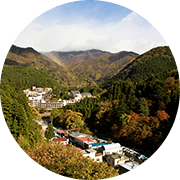
The first national hot spring resort
Shima Onsen was designated as the first national hot spring resort in 1954.
What is a national hot spring resort?
Remarkable effects of hot springs Abundant amount of gushing water
The surrounding scenery is excellent, the environment is good , etc.
It is designated by the Ministry of the Environment not only as a hot spring but also as an environmentally friendly hot spring area.
Shima Onsen Sekizenkan
History Chronology
-
1691-1694Construction/opening
Sekizenkan built the Honkan in 1691 and opened as an inn in 1694. The remnants of that time as a typical two-story hot spring inn can be seen in the thick beams and pillars at the entrance of the Honkan.
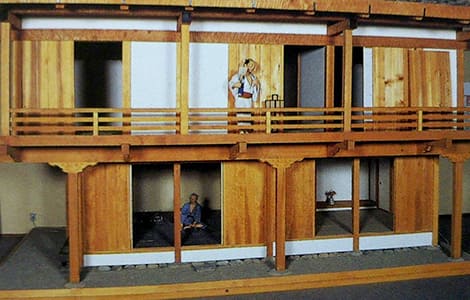
-
1877 Meiji 10There is an upper jar
Although it does not exist now, there was a "Kami no Tsubo" at Ichibankan. At the beginning of construction, it was a two-story building with a stone roof with a shingled beam structure. It was a simple kitchen. This upper building was a building that represented the format of a hot spring resort in the Edo period.
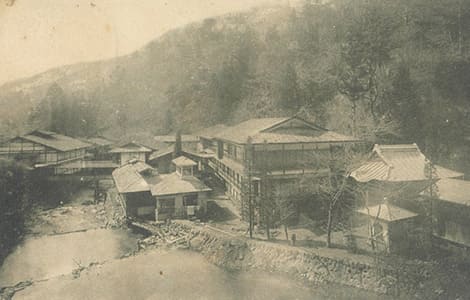
-
1894-1897Extension
With the increase in the number of visitors to the hot springs, around 1897, the third floor was expanded with a study-style tatami room.
Originally, there were only stairs outside, but in line with the times, stairs were also installed indoors.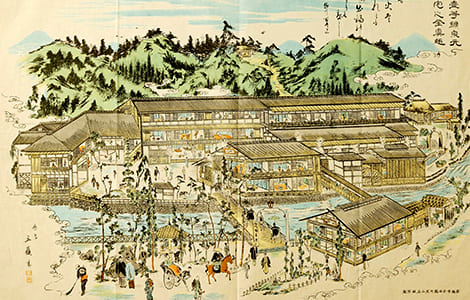
-
1923Construction of a 1,000-person bath and entertainment room
Although it does not exist at present, a 1,000-person bath in the basement in front of Ichibankan and an entertainment room on the first floor were built. You can see from the exterior photos of the time that the building was a building that incorporated the modern atmosphere of the Taisho era.
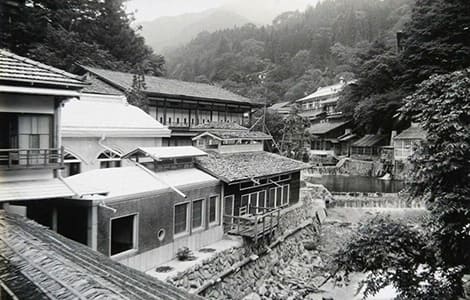
-
1930Built Genroku-no-Yu (Zenshin)
Genroku-no-Yu, which represents Sekizenkan, was built in 1930. The bathhouse on the first floor is made of reinforced concrete in the Taisho Romanesque architectural style, with two-story wooden guest rooms on top. The large arched windows were luxurious at the time, and the fact that there is no partition between the bathtub and the dressing room is a reminder of that time.
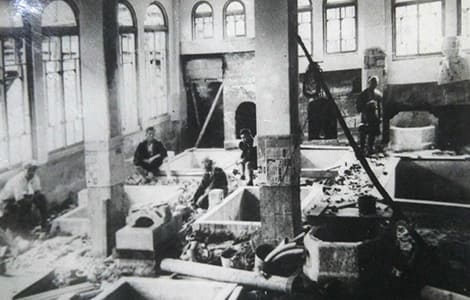
-
1936Build a mountain lodge
The “Sanso”, which is designated as a registered tangible cultural property of the country, was built on the slope at the back of the Honkan, gathering the essence of the architecture of the time.
It is an unprecedentedly gorgeous Momoyama-style building decorated with the skills of carving and craftsmanship.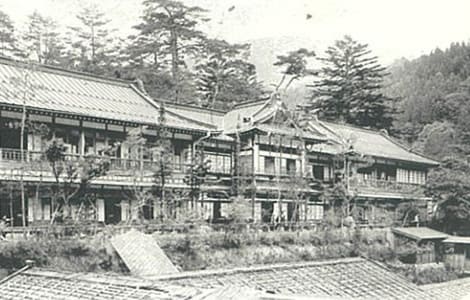
-
1936building new
Koshin, designated as an important cultural property in Nakanojo Town, was built across the red bridge. It is said that it was built from leftover materials from a mountain lodge, and according to the reconstruction drawings, it originally consisted of 19 guest rooms, a shared kitchen, and a shared toilet. Currently, a part of it is operated as "Yakuzen Chaya".
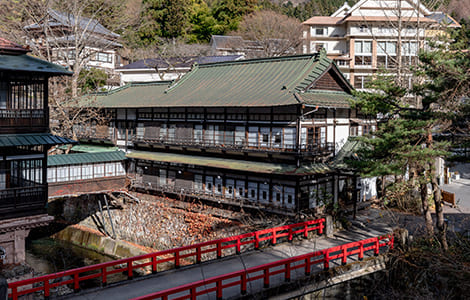
-
1959New construction of large hall and Iwaburo, etc.
In addition to newly constructing and renovating the Ohiroma and Iwaburo, the aging building was reinforced.
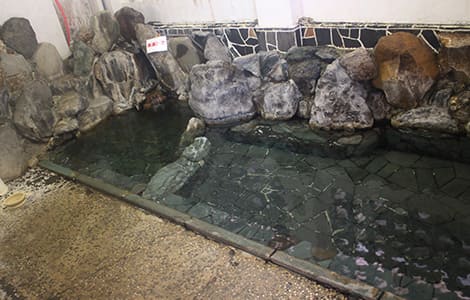
-
1979Reinforcement of Ichibankan
The 100-year-old wooden Honkan was demolished and a reinforced concrete building was built.
-
1986Constructed "Kashotei"
At the back of the Sanso, in a scenic area surrounded by old pine trees and bamboo groves, we built Kashotei, which has a pure Japanese style.
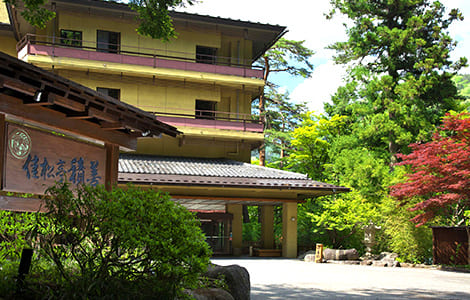
-
2014Kashotei Lounge “Shojo” Renewal
Kashotei's lounge "Shojo" has been renewed using the ranma of the Sanso.
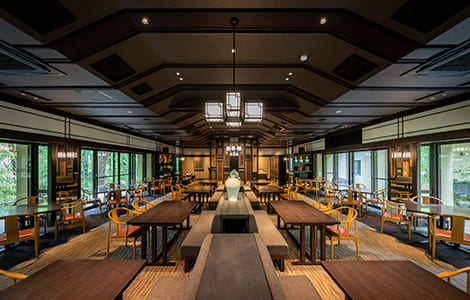
-
2015Renewal of Sanso“Moekoji”
The Sanso"Moegi" has been renewed as a room with a semi-open-air bath.
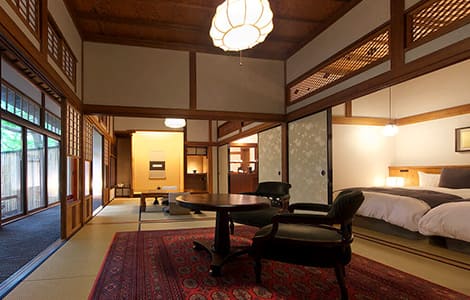
-
2016Kashotei“Mori/Wafu/Nami” renewal
Three corner rooms of Kashotei have been renewed as guest rooms with open-air baths.
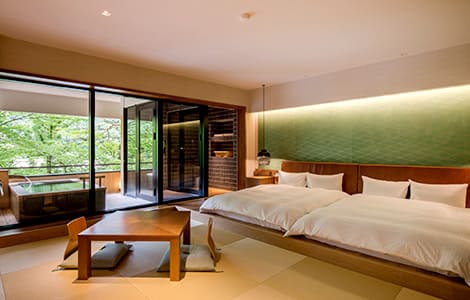
-
2017Renewal of Sanso“Akaneichi” and “Moekoichi”
The rooms of the Sanso"Akaneichi" and "Moegiichi" have been renewed as rooms with semi-open-air baths.
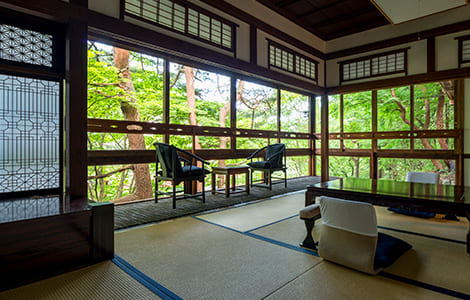
-
2018All rooms are non-smoking
Based on the requests of many customers and the social situation in recent years, all guest rooms are non-smoking.
-
2018Kashotei courtyard renewal
The garden design group waso-design added more charm and renewed it as a new garden. You can enjoy the scenery of the four seasons by planting flowers with different blooms on the forest floor depending on the season.
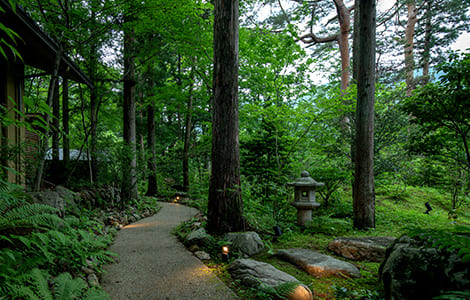
-
2019Renewal of Sanso“Utsukinichi” and “Ruriichi”
The room where many celebrities used to spend time like a villa while reading slowly has been renovated into a room that suits the current style of stay.
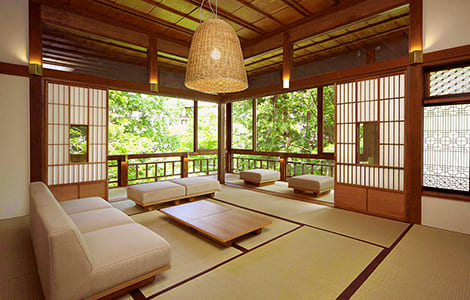
-
2019Kashotei entrance/front/lobby renewal
A noren with the Sekizenkan family crest welcomes guests. The lobby has become a low counter where you can sit and carry out procedures.
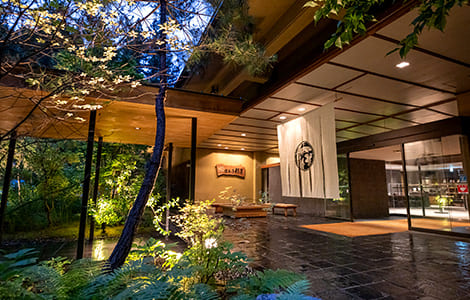
-
2019Reproduction of the Honkan's "bath wheel"
The hot water wheel, which was once used to stir the hot spring water, has been recreated in almost the same location as the print from around the 14th year of the Meiji period.
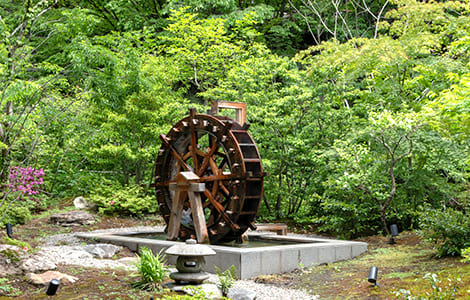
-
2020Kashotei“Matsukaze 7” renewal
A corner room of Kashotei has been renewed into a modern space. A room with an indoor hot spring bath.
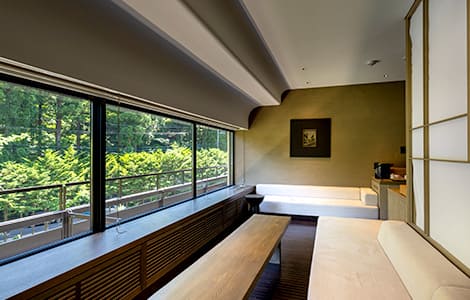
-
2020“Yakuzenya Koshin” opens
Please return home healthy from the inside out with a medicinal meal menu based on traditional Chinese medicine theory. The inside of the store where the historic building was reborn is also a highlight.
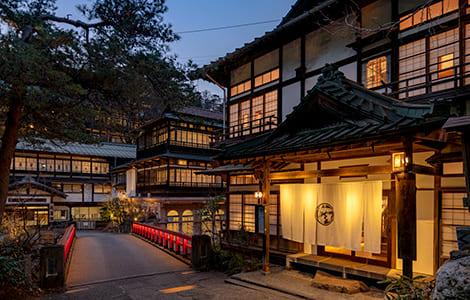
-
2021Sanso Premium Lounge opens
The coffered ceiling has been restored as it was at the time, with the design motif of Sekizenkan and scenes from poems about Shima. Introduced Tannoy's vintage speakers to bring a deep lingering impression to the "luxury time spent doing nothing".
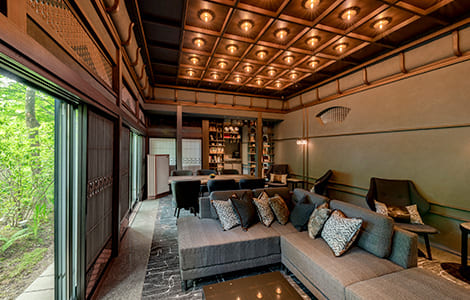
-
2021Sanso“Utsukin 5” renewal
It is a guest room with an open-air bath that has been carefully preserved from the time when the Sanso was built, such as "Kumiko shoji".
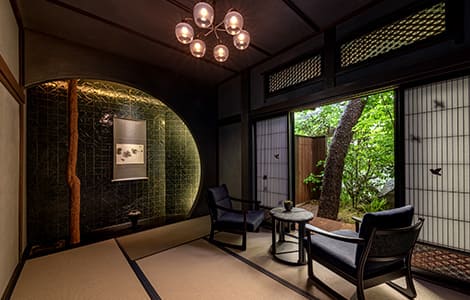
-
2022"Genroku no Yu" restoration work
The tiles have been restored to their original shape, making it a comfortable space.
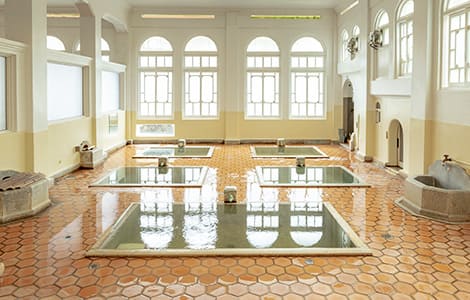
-
2022“Honkan building front” restoration
While maintaining the old appearance, it has become a more comfortable space.
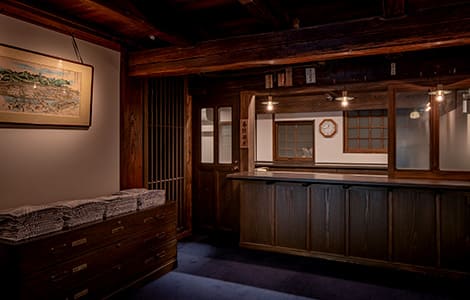
-
2022Ichibankan Rest Area
It is a place where you can relax after taking a bath. It is also available for day trip customers.
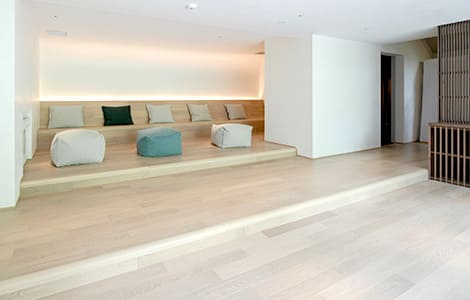
-
2022Honkan footbath
We have newly established a footbath at Genroku no Yu Soba. This is a new spot in Sekizenkan where you can enjoy the view of the hot springs.
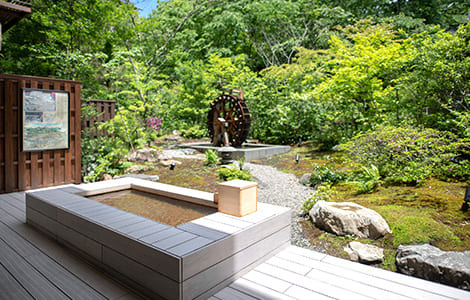
-
2022Lunch restaurant “Oimoto Kamaage Udon Sekizenya”
Renewal openA restaurant that asks Shoko Murakami, a flying cuisine researcher, to supervise the menu has opened. We offer a healthy and gastrointestinal menu.
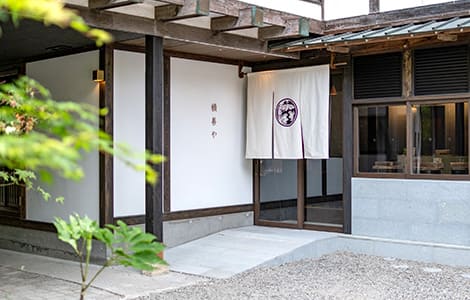
see more
A story created by the history of Sekizenkan
San Yutei EnchoSanyutei Encho storyteller
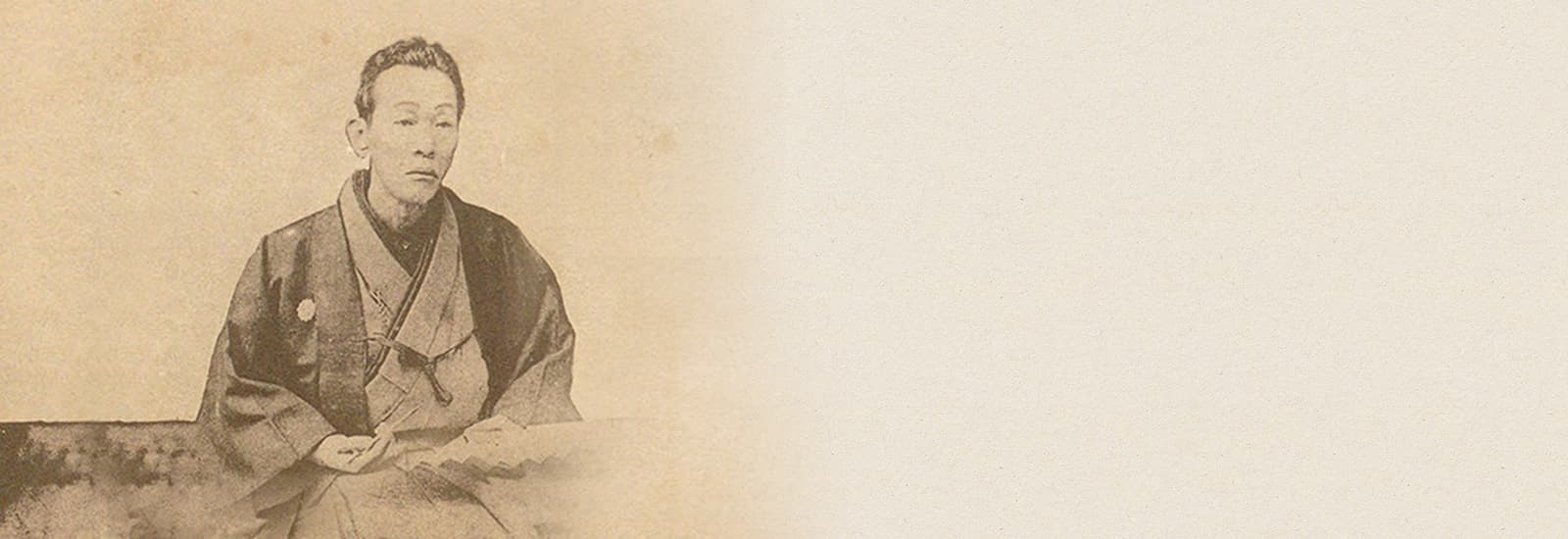
A good inn called 40,000 checkpoints
A rakugo storyteller active from the Edo period to the Meiji period. He is a great name of Edo rakugo and the founder of rakugo revival. Known as the founder of modern Japanese, with a colloquial style that is close to modern colloquialism, he created many works such as the ghost stories "Botan Toro" and "Makkei Kasegafuchi."
Around the 20th year of the Meiji era, I visited Sekizenkan with Kabuki actor Danjuro Ichikawa. Based on the impressions of his stay in Gunma at that time, he created a human story "Kirigakure Ikaho no Yukemuri". In this story, Sekizenkan also appears, saying, ``Shiman no Sekizen (Sekizen) is a good inn.'' It is a story that shows how the guests stayed at Sekizenkan at that time.
Sekizenkan, which is introduced in Encho's rakugo, is also summarized in detail in "The Husband's Study".
willow strawByakuren Yanagihara poet
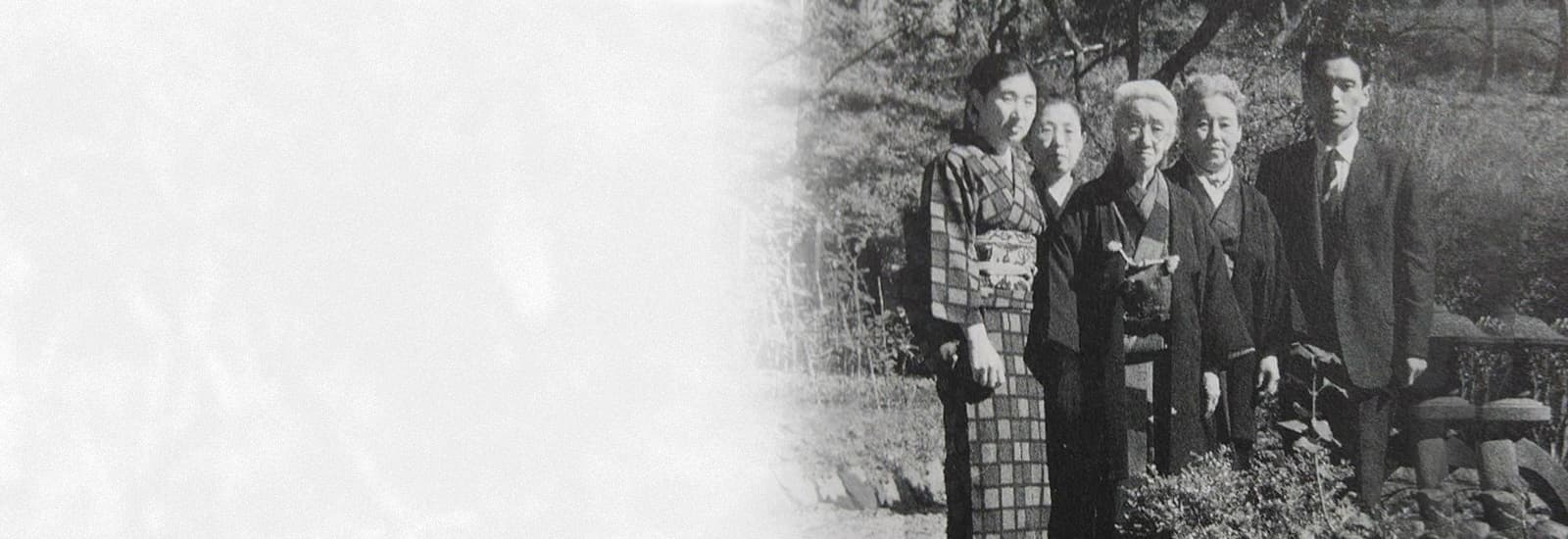
you in the mountains
Day and night
A poet who was active from the Taisho era to the Showa era. In the 2014 NHK morning serial drama "Hanako and Anne", Hanako's lifelong friend Renko Hayama and later Byakuren Yanagihara.
Byakuren Yanagihara, who was called a passionate poet and led a turbulent life, loved Shima Onsen and often stayed at Sekizenkan.
One of the poems composed at Shima Onsen is "You in the mountains, one light that has both day and night. This poem is left as a monument in Yuzuriha Park in Shima Onsen.
About Spirited Away movie
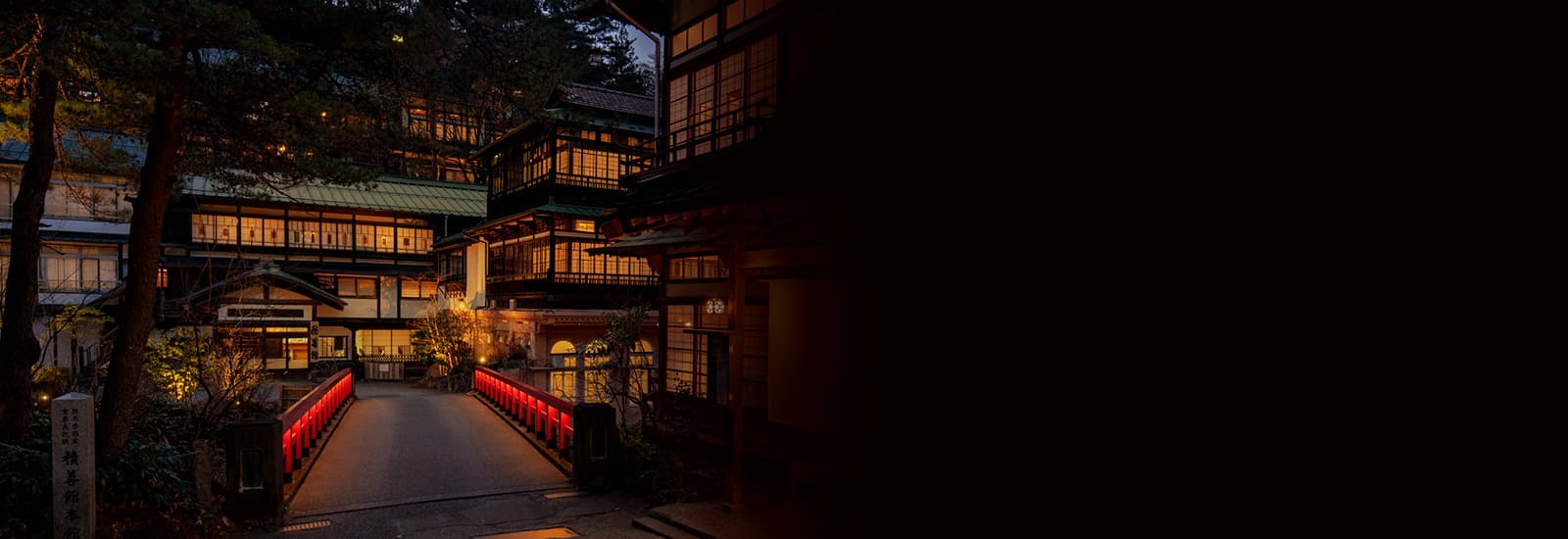
The reason why Sekizenkan is said to be the model of the Yuya, the bathhouse in "Spirited Away"
From July 26th (Sat) to September 28th (Sun), 2008, the "Studio Ghibli Layout Exhibition" was held at the Museum of Contemporary Art Tokyo.
This exhibition was organized by Nippon Television with the full cooperation of Studio Ghibli as an exhibition to discover new charms of animation.
From 14:55 to 15:55 on July 25th (Friday), the day before the opening of this "Studio Ghibli Layout Exhibition", NTV will air a special Hayao Miyazaki program titled "Studio Ghibli Layout Exhibition Special Program ~ Director Miyazaki 130. A program titled Exclusive Interview: Miyazaki's Anime Wakuwaku Secret" was aired. In that program, Shima Onsen Sekizenkan was introduced as one of the image models of the bathhouse "Aburaya" in "Spirited Away." In the program, the Honkan of Dogo Onsen and Meguro Gajoen in Tokyo were introduced as other image models.
The owner of the hotel was also interviewed and appeared on the program.
Many writers and artists who visited Sekizenkan
▼You can check the entire table by scrolling horizontally. ▼
| name | Date of visit | person introduction |
|---|---|---|
| Tasaki grass clouds |
Meiji 16 Visited in August |
A Japanese painter in the early Meiji period. Ashikaga clan. At the end of the Tokugawa shogunate, he was active in the reverence for the king movement. Komuro Suiun's teacher. The 1st National Assembly receives the "Tokugi" award at the fair. |
| Nine generation Ichikawa Danjuro |
Visited around Meiji 20 | Kabuki actor active in the Meiji period. The store name is Narita-ya. Together with Onoe Kikugoro V and Ichikawa Sadanji I established the so-called 'Dan Kikusa era'. Visited with rakugo storyteller Encho Sanyutei. |
| Sanyutei Encho |
Visited around Meiji 20 | A rakugo storyteller active from the Edo period to the Meiji period. It is a great name of Edo rakugo and the founder of rakugo revival. Visited with Kabuki actor Danjuro Ichikawa. |
| Goto Shinpei |
Meiji 27 Visited in June |
Meiji and Taisho politicians. Born in Iwate prefecture. Director of the Health Bureau in 1892, Director of the Civil Administration Bureau of Taiwan in 1909, Minister of Home Affairs Yamamoto in the Cabinet in 1923, President of the Teito Reconstruction Institute. |
| Tokutomi Soho |
1924 April visit |
Journalist, thinker, historian, and critic spanning the Meiji, Taisho, and Showa eras. He was also active as a politician and had a great influence on Japan before, during, and after the war. |
| Nakamura unfolding |
Taisho 3rd year Visited in August |
A painter and calligrapher in the Meiji and Taisho periods. After returning to France, he belonged to the Taiheiyogakai. Established the Calligraphy Museum by collecting ancient Chinese documents related to calligraphy. |
| Seventh generation Matsumoto Koshiro |
1945 Visited in August |
Kabuki actor. He inherited the style of the 9th Danjuro. He also pioneered new fields such as opera and translated works. During the Greater East Asian War, he was evacuated to 40,000. |
| Komuro green cloud |
Visited often after Meiji 30 | Journalist, thinker, historian, and critic spanning the Meiji, Taisho, and Showa eras. He was also active as a politician and had a great influence on Japan before, during, and after the war. |
| Sato red green |
Date of visit unknown | A poet and novelist of the Meiji, Taisho, and Showa periods. Born in Aomori Prefecture. Father of poet Sato Hachiro and writer Sato Aiko. Studied under Shiki Masaoka. "A Brief History of Haiku". Released "Oh Gyokuhai ni Hana Ukete" to the Shonen Club. |
| Yanagihara white lotus |
1957 Visited several times after visiting in June |
Poet of the Taisho and Showa periods. Born in Tokyo. Married to Shishiki Kitakoji, but eventually divorced. Married Ito Denemon, a coal mining tycoon in Kyushu, at his request. He was known as a passionate poet because of his love affair with Ryusuke Miyazaki. "Fumi-e" and "Phantom flower". Hosted by Kotodama. |
| Satoshi Katayama | Date of visit unknown | A social activist and politician in the Taisho and Showa periods. Born in Wakayama Prefecture. General Secretary of the Social Democratic Party. Active in the proletariat movement. After the war, he became General Secretary and Chairman of the Socialist Party. 1947 Prime Minister of the Socialist Party Prime Minister's Cabinet. In 1690, he formed the Democratic Socialist Party and served as the Supreme Advisor. |
| Rei Satomi | Date of visit unknown | A novelist in the Taisho and Showa periods. Born in Kanagawa prefecture. Takeo Arishima, Ikuma's younger brother. In 1910, he participated in the first issue of Shirakaba. His representative works are the full-length novels "Tajobutsushin" and "Anjo Family Brothers." |
| Tsuchiya civilization |
1945 Visited in November |
poet. Born in Gunma prefecture. Studied under Sachio Ito. 1930 editorial publisher of "Araragi". Poetry collections such as "Fuyukusa", "Jyukanshu" and "Sanyashu". Received the Art Academy Award for "Manyoshu private note". Honorary Citizen of Gunma Prefecture. |
| Ono Saseo |
Date of visit unknown | Genre painter, cartoonist. Born in Kanagawa prefecture. A leading figure in women's painting. Look, you're good at talking. A collection of paintings such as "Sarusaru Kassen" and "Nyotai Giwa". |
| Nobusuke Kishi | Date of visit unknown | politician. Born in Yamaguchi prefecture. Minister of Commerce and Industry in the Tojo Cabinet in 1941. Prime Minister in 1957. |
| Enomoto Kenichi |
Visited in 1945 | Showa period comedy actor. Born in Tokyo. Comedy leader of Asakusa Opera. Known as Enoken, he is active on stage and in movies. |
| Niwa Fumio |
1954 Visited in November |
Showa period novelist. Born in Mie prefecture. Famous for "Snake and Pigeon" and "Shinran". President of the Japan Writers Association. |
| Nishimoto city |
visit often | He has served as director of each regional savings bureau of the Ministry of Communications. After retiring in 1964, lived in Nagano City. Tomiyasu Fuse's senior disciple. The haiku style is devoted to solid sketching. He presides over the haiku magazine Shirayobi. Haiku collections such as "Keijo" and "Goze". |
| Hattori Ryoichi |
Showa October 43, Visited in August 1948 |
Born in Osaka Prefecture. Studied under Emmanuel Mettel. Chairman of the Japan Composers Association. In 1979, he received the Order of the Sacred Treasure, Third Class. He composed many hit songs such as "Suzhou Night Song", "Blue Mountains" and "Tokyo Boogie Woogie". |
| Nakasone Yasuhiro |
visit often | politician. Born in Gunma prefecture. In 1947, he was elected for the first time at the young age of 28. 1974 Secretary-General of the Liberal Democratic Party. Prime Minister in 1982. |




